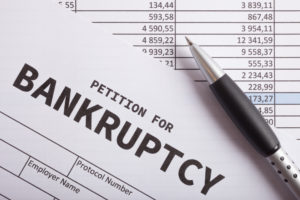 Bankruptcy is handled in federal court, and can support a person who wants to get rid of their debts or establish a plan to pay it back overtime. But there are differences between each bankruptcy chapter so it’s important that the debtor learns more about the nuances of each, so they are filing for the correct chapter. As a bankruptcy lawyer from the The Law Offices of Ronald I. Chorches knows, bankruptcy may have a stigma on it, but there is no shame in utilizing a resource that is designed to help people reach more secure financial footing in the future.
Bankruptcy is handled in federal court, and can support a person who wants to get rid of their debts or establish a plan to pay it back overtime. But there are differences between each bankruptcy chapter so it’s important that the debtor learns more about the nuances of each, so they are filing for the correct chapter. As a bankruptcy lawyer from the The Law Offices of Ronald I. Chorches knows, bankruptcy may have a stigma on it, but there is no shame in utilizing a resource that is designed to help people reach more secure financial footing in the future.
What are the different bankruptcy chapters?
There are six bankruptcy chapters, and it can be difficult to figure out which chapter is most suitable for you. This is where help from a lawyer can be useful, so that you know you are filing paperwork for the chapter that will benefit you the most. Some bankruptcy chapters allow people to keep their assets, while others are more focused on repayment plans. Here are the six bankruptcy chapters summarized below:
- Chapter 7: referred to as liquidation bankruptcy, where a debtor gives up certain property so it can be sold to pay creditors for outstanding debts.
- Chapter 9: this chapter is designed for municipalities, such as school districts, counties, cities, and towns, who then get protection from creditors as they create a plan for adjusting debts.
- Chapter 11: otherwise called reorganization bankruptcy, this is useful for either individuals or businesses who need a financial restructuring but prefer to not sell off assets.
- Chapter 12: this chapter was established to meet the needs of family fisherman and family farmers who are experiencing extreme financial distress, who will have to come up with a repayment plan for the upcoming few years.
- Chapter 13: this wage earner plan chapter helps someone with regular income develop a schedule to pay back at least a portion of their debts. This chapter allows individuals to halt foreclosure on their homes.
- Chapter 15: a bankruptcy code added in 2005, it offers help for those who have debts in more than one country, allowing for cooperation between the foreign debtor, U.S. bankruptcy courts, and foreign courts.
Does bankruptcy protect my home and assets?
Bankruptcy can make it possible for people to eliminate the obligation to pay most or the entirety of their debts. It can also halt foreclosure on your home and give you a chance to catch up on payments you missed. However, bankruptcy does not automatically discharge mortgages and other liens on property without payment. Those who want to protect their home and assets may want to consider bankruptcy as means to avoid repossession of vehicles or other property. Filing for bankruptcy with help from a reputable law firm, such as The Law Offices of Ronald I. Chorches, can stop debt collection harassment, wage garnishment, and other actions taken by creditors to collect.
Bankruptcy is a great resource to consider, but it shouldn’t be taken lightly either. Debtors must consult with a legal professional before applying for a bankruptcy chapter, to make sure it will set them up for success from the start.